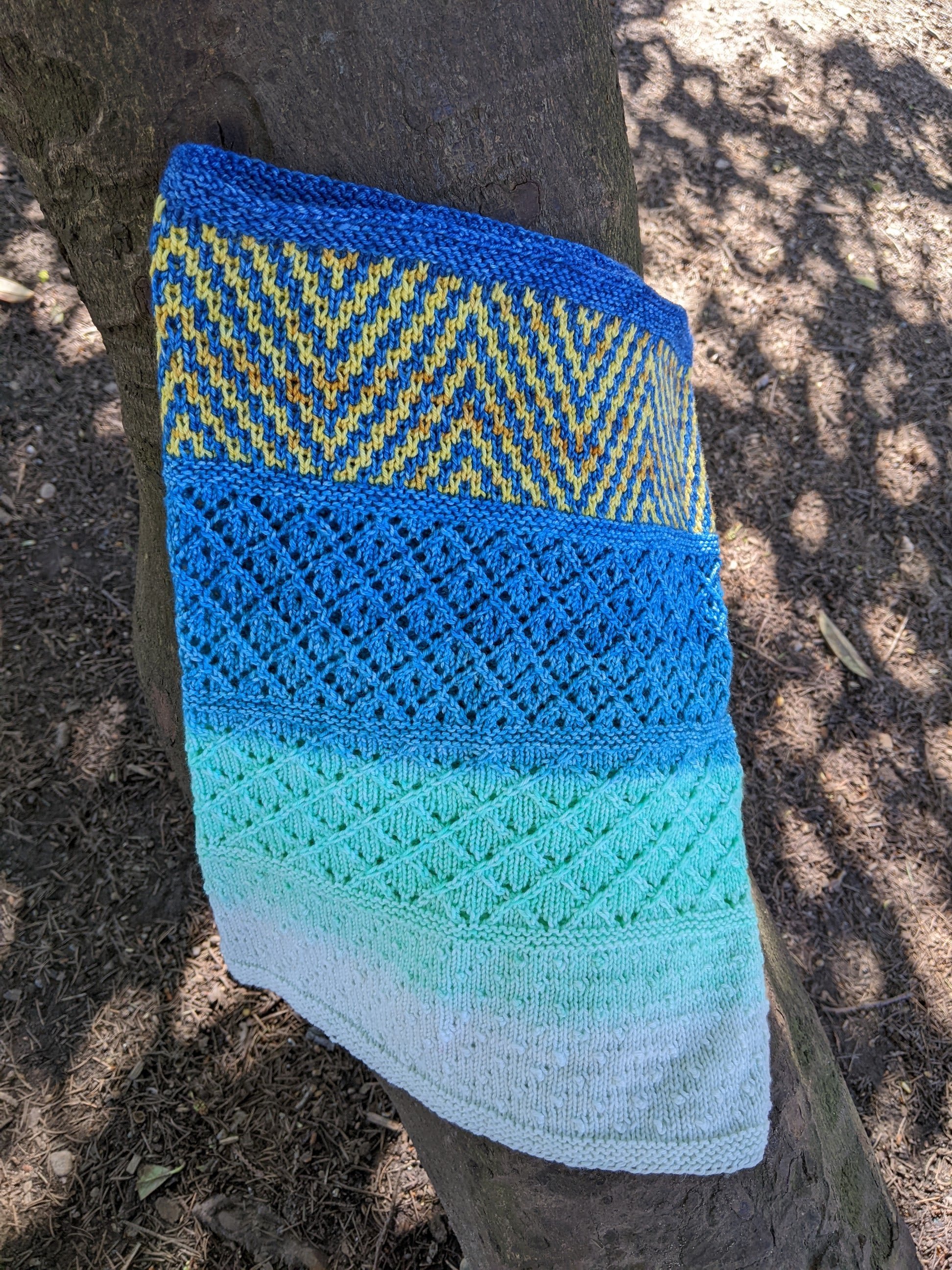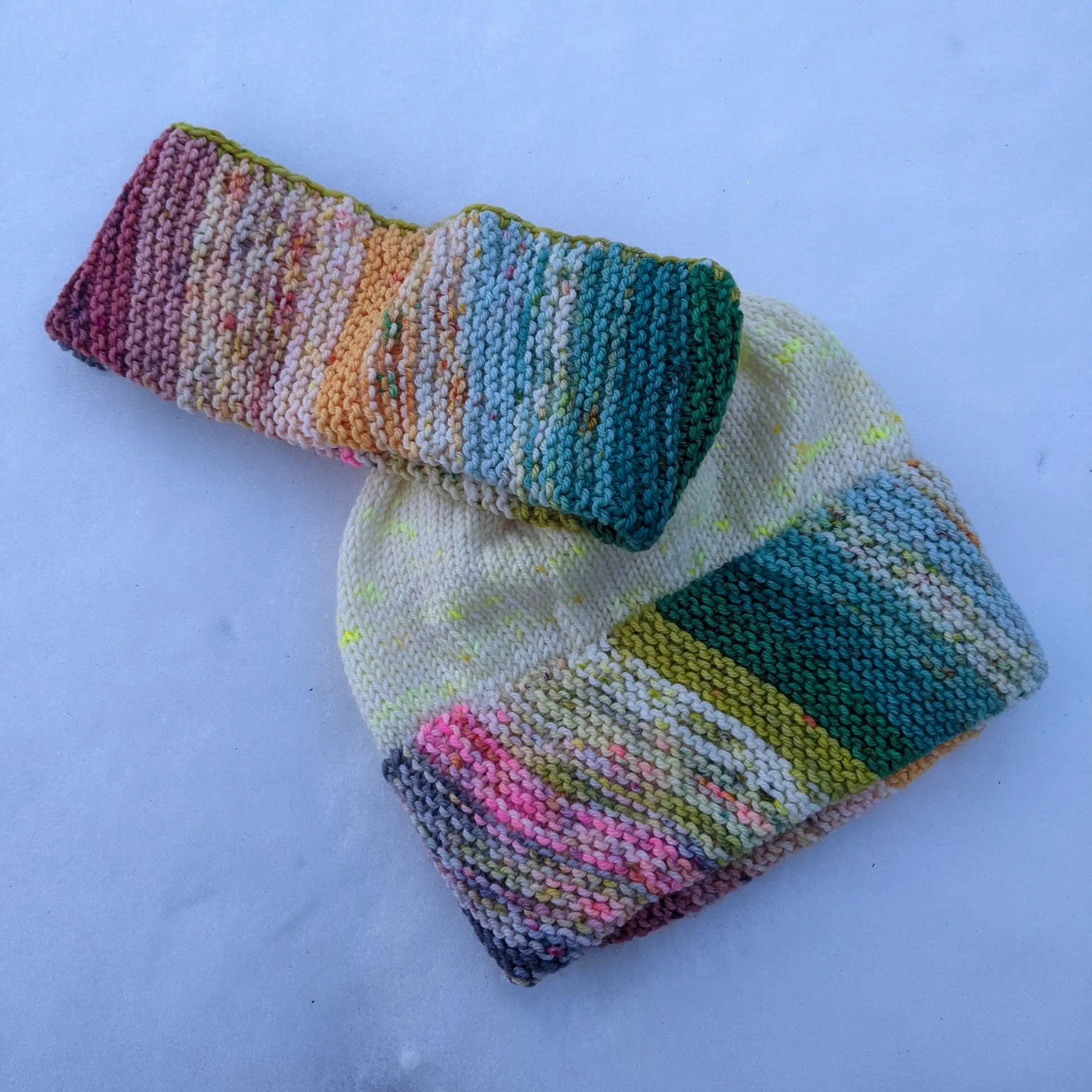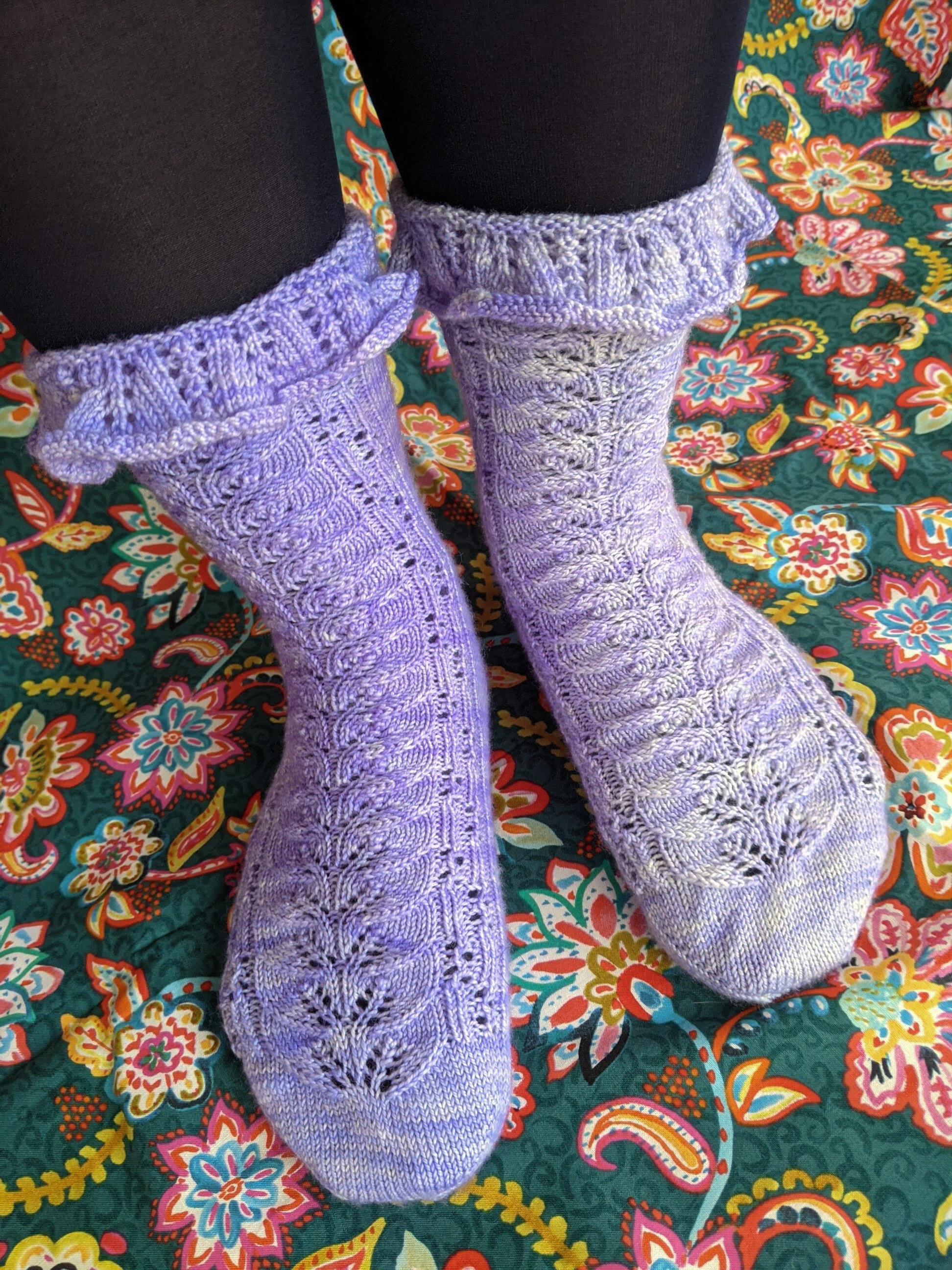Hello from farmer Laur!
First, I have no idea how I missed this gradient club the first time KnitCircus posted it, but when they re-released it for non-club members I knew I had to jump on it immediately. I’ve put way too many hours into Stardew Valley to not try to design something with a game-inspired gradient!
As per usual, my initial concepts were all way too literal, trying to find stitch patterns that would look exactly like something in the game. Eventually, I came around to the concept of the growing crops, but with more fanciful interpretations.
The growing sections start with seeds, in the form of raindrop stitch. It’s a bobble that isn’t a bobble! I really hate having to turn my work a billion times and end with p5tog or something equally odious, so I’m in love with this sweet little stitch that gets that same bobble texture without too much work. That said, I did slightly modify the stitch for my purposes, so I made a tutorial!
Sections from bottom to top: seeds, sprouts, crops, mosaic
The second growing section represents the sprouts of the plant, so it’s some simple lace in a vaguely grid shape. Of course, in knitting we love diamond grids over square ones, so diamond lace it is!
The final growing section is fully-grown crops, so more diamond lace, but make it fancy. I had a devil of a time making the chart for this section - I first modified a flat stitch for in-the-round knitting (not usually that difficult, but can be tricky if you have decreases that cross the BOR marker). Then, I had to make a lace chart that would represent what was happening, which is way harder than I thought it would be! It’s important to me to provide both written and charter instructions for knitters, but I admit this section made me want to abandon charts. I knew how to say what I wanted to happen, but it took many iterations (and lots of help from my tech editor snooptiggercrafts <3) to finally get a chart that would accomplish the same thing.
Lastly! The cheerful mosaic section representing the Stardew Valley logo. I know I say this all the time, but mosaic is the literal greatest. If you haven’t yet tried mosaic knitting, please do! It’s just knitting and slipping, no really complicated colorwork (aside from paying attention to where to knit and slip).
After finish the cowl, I still had a bit of yarn left, but realized i had gone over 100g on the MC part. I shortened the seeds section slightly, which not only uses less yarn but has the added benefit of matching the lacy sections in height (since in order to stretch them to the right width, they have to lose height).
I friggin love how the cowl turned out. I also love the photos - thanks to my very patient partner! KnitCircus has bundles available on their site, and of course non-gradients will work just as well.



















